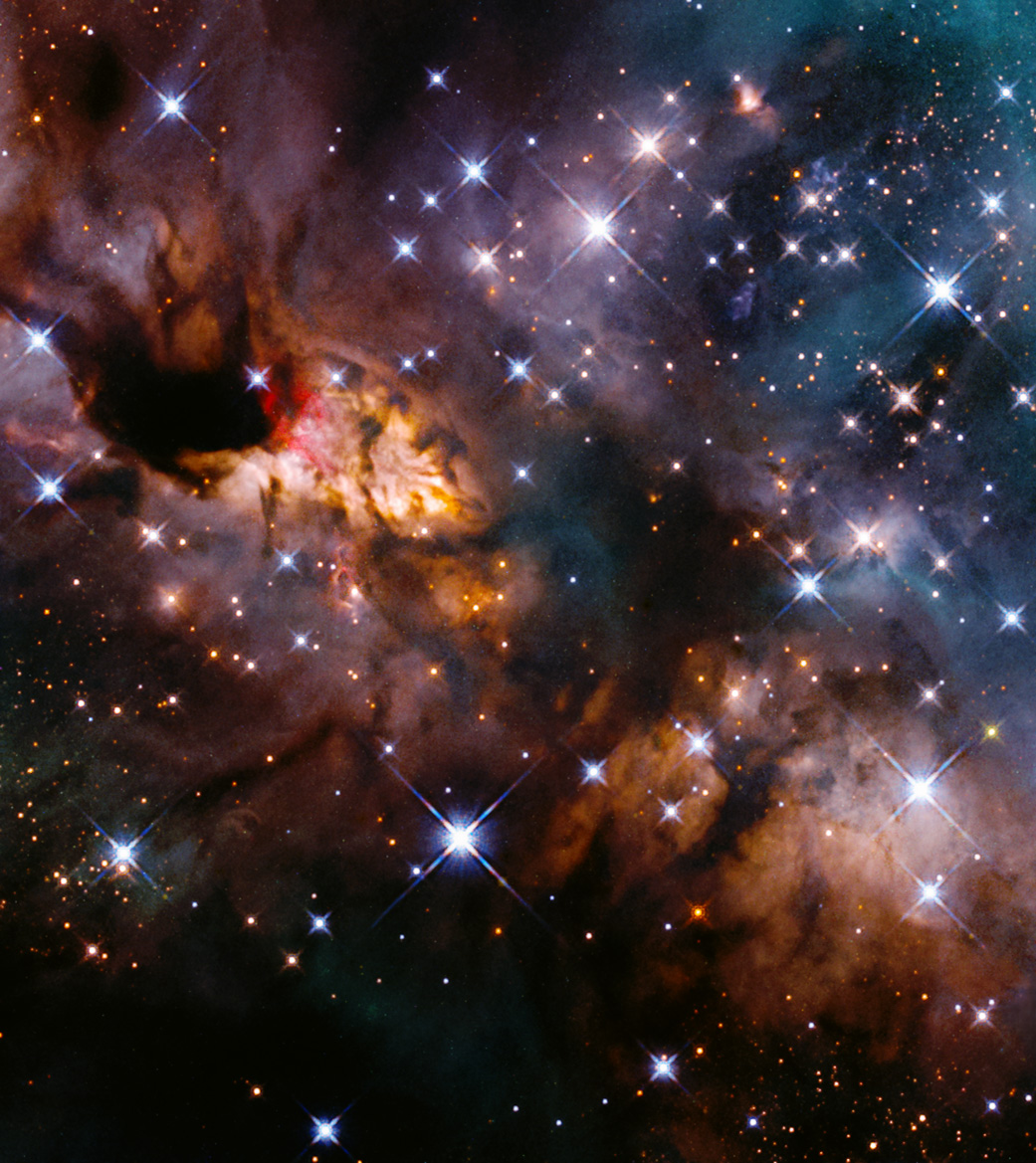Hubble telescope captures stunning image of the star-forming Prawn Nebula

The Hubble Space Telescope has captured a stunning view of the Prawn Nebula floating through deep space.
The Prawn Nebula, formally known as IC 4628, is an emission nebula located 6,000 light-years from Earth, in the constellation Scorpius. Nebulas, or clouds of interstellar gas and dust, form following massive stellar explosions; in turn, this interstellar material gives life to new stars.
Stretching over 250 light-years wide, IC 4628 is believed to be a massive stellar nursery, where new stars are forming. Scientists classify it as an emission nebula because its gas has been energized, or ionized, by the radiation of nearby stars. That process produces electrons that re-emit the absorbed energy in the form of infrared light, according to a statement from NASA.
Related: Hubble telescope reveals a gorgeous, detailed new view of the Veil Nebula
However, the human eye can't detect this type of light, making IC 4628 incredibly faint to viewers on Earth. Given Hubble's vantage point in space and its range of cameras, the telescope is able to get an up-close view of the nebula's structure, including bright areas of glowing gas and dazzling star formation.
In the recent Hubble image, which captures a small portion of the nebula's vast star-forming region, the red swirls of dust and gas indicate the presence of ionized iron (Fe II) emission, according to the statement.
The recent image was taken using Hubble's Wide Field Camera 3 as part of a larger initiative to survey massive and intermediate-size stars that are still in the early stages of development, also known as protostars.
Get the Space.com Newsletter
Breaking space news, the latest updates on rocket launches, skywatching events and more!
"Astronomers used the infrared sensitivity of Hubble's Wide Field Camera 3 to look for hydrogen ionized by ultraviolet light ionized by the protostars, jets from the stars, and other features," according to the NASA statement.
Follow Samantha Mathewson @Sam_Ashley13. Follow us on Twitter @Spacedotcom and on Facebook.
Join our Space Forums to keep talking space on the latest missions, night sky and more! And if you have a news tip, correction or comment, let us know at: community@space.com.

Samantha Mathewson joined Space.com as an intern in the summer of 2016. She received a B.A. in Journalism and Environmental Science at the University of New Haven, in Connecticut. Previously, her work has been published in Nature World News. When not writing or reading about science, Samantha enjoys traveling to new places and taking photos! You can follow her on Twitter @Sam_Ashley13.









